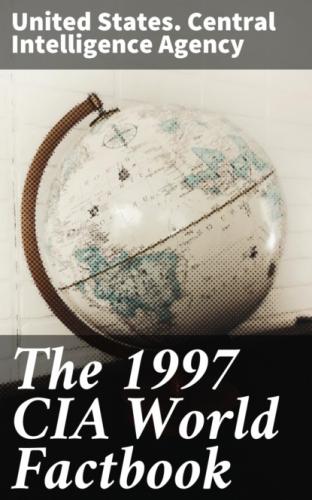Political parties and leaders: political parties prohibited
Political pressure groups and leaders: several small, clandestine leftist and Islamic fundamentalist groups are active; following the arrest of a popular Shi'a cleric, Shi'a activists have fomented unrest sporadically since late 1994, demanding the return of an elected National Assembly and an end to unemployment
International organization participation: ABEDA, AFESD, AL, AMF,
ESCWA, FAO, G-77, GCC, IBRD, ICAO, ICRM, IDB, IFC, IFRCS, IHO, ILO,
IMF, IMO, Inmarsat, Intelsat, Interpol, IOC, ISO (correspondent), ITU,
NAM, OAPEC, OIC, UN, UNCTAD, UNESCO, UNIDO, UPU, WFTU, WHO, WIPO, WMO,
WTrO
Diplomatic representation in the US: chief of mission : Ambassador Muhammad ABD AL-GHAFFAR Abdallah chancery: 3502 International Drive NW, Washington, DC 20008 telephone : [1] (202) 342–0741, 342–0742 FAX: [1] (202) 362–2192 consulate(s) general: New York
Diplomatic representation from the US: chief of mission: Ambassador David M. RANSOM (scheduled to depart in June 1997) embassy : Building No. 979, Road 3119 (next to Al-Ahli Sports Club), Zinj District, Manama mailing address: FPO AE 09834–5100; International Mail Box 26431, Manama (International Mail) telephone: [973] 273–300 FAX : [973] 275–418
Flag description: red with a white serrated band (eight white points) on the hoist side
Economy
Economy - overview: In Bahrain, petroleum production and processing account for about 60% of export receipts, 60% of government revenues, and 30% of GDP. Economic conditions have fluctuated with the changing fortunes of oil since 1985, for example, during and following the Gulf crisis of 1990–91. With its highly developed communication and transport facilities, Bahrain is home to numerous multinational firms with business in the Gulf. A large share of exports consists of petroleum products made from imported crude. Construction proceeds on several major industrial projects. Unemployment, especially among the young, and the depletion of both oil and underground water resources are major long-term economic problems.
GDP: purchasing power parity - $7.7 billion (1996 est.)
GDP - real growth rate: 3% (1996 est.)
GDP - per capita: purchasing power parity - $13,000 (1996 est.)
GDP - composition by sector: agriculture: 1% industry: 38% services: 61% (1995)
Inflation rate - consumer price index: 0% (1996 est.)
Labor force: total: 140,000 by occupation: industry and commerce 85%, agriculture 5%, services 5%, government 3% (1982) note: 44.39% of the population in the 15–64 age group is non-national (July 1997 est.)
Unemployment rate: 15% (1996 est.)
Budget: revenues: $1.49 billion expenditures: $1.67 billion, including capital expenditures of $300 million (1995)
Industries: petroleum processing and refining, aluminum smelting, offshore banking, ship repairing; tourism
Industrial production growth rate: 3.4% (1995)
Electricity - capacity: 1.05 million kW (1994)
Electricity - production: 4.28 billion kWh (1994)
Electricity - consumption per capita: 7,102 kWh (1995 est.)
Agriculture - products: fruit, vegetables; poultry, dairy products; shrimp, fish
Exports: total value: $4.2 billion (f.o.b., 1996 est.) commodities : petroleum and petroleum products 61%, aluminum 7% partners: India 22%, Japan 12%, Saudi Arabia 6%, US 6%, UAE 5% (1995)
Imports: total value : $3.5 billion (f.o.b., 1996 est.) commodities: nonoil 63%, crude oil 37% partners: Saudi Arabia 40%, US 13%, UK 7%, Japan 5%, Switzerland 5% (1995)
Debt - external: $3.2 billion (1995)
Economic aid: $NA
Currency: 1 Bahraini dinar (BD) = 1,000 fils
Exchange rates: Bahraini dinars (BD) per US$1 - 0.3760 (fixed rate)
Fiscal year: calendar year
@Bahrain:Communications
Telephones: 73,552 (1987 est.)
Telephone system: modern system; good domestic services and excellent international connections domestic: NA international: tropospheric scatter to Qatar and UAE; microwave radio relay to Saudi Arabia; submarine cable to Qatar, UAE, and Saudi Arabia; satellite earth stations - 2 Intelsat (1 Atlantic Ocean and 1 Indian Ocean) and 1 Arabsat
Radio broadcast stations: AM 2, FM 3, shortwave 0
Radios: 320,000 (1993 est.)
Television broadcast stations: 2 (1988 est.)
Televisions: 270,000 (1993 est.)
@Bahrain:Transportation
Railways: 0 km
Highways: total: 2,740 km paved: 2,159 km unpaved: 581 km (1992 est.)
Pipelines: crude oil 56 km; petroleum products 16 km; natural gas 32 km
Ports and harbors: Manama, Mina' Salman, Sitrah
Merchant marine: total: 6 ships (1,000 GRT or over) totaling 117,060 GRT/194,061 DWT ships by type: bulk 1, cargo 3, chemical tanker 1, oil tanker 1 (1996 est.)
Airports: 3 (1996 est.)
Airports - with paved runways: total: 2 over 3,047 m: 2 (1996 est.)
Airports - with unpaved runways: total: 1 1,524 to 2,437 m: 1 (1996 est.)
Heliports: 1 (1996 est.)
Military
Military branches: Ground Force, Navy, Air Force, Coast Guard,
Internal Security Forces
Military manpower - military age: 15 years of age
Military manpower - availability: males age 15–49: 216,444 (1997 est.)
Military manpower - fit for military service: males: 119,781 (1997 est.)
Military expenditures - dollar figure: $256 million (1994)
Military expenditures - percent of GDP: 6.4% (1994)
Transnational Issues
Disputes - international: territorial dispute with Qatar over the Hawar Islands; maritime boundary with Qatar ______________________________________________________________________
BAKER ISLAND
(territory of the US)
@Baker Island:Geography
Location: Oceania, atoll in the North Pacific Ocean, about one-half of the way from Hawaii to Australia
Geographic coordinates: 0 13 N, 176 31 W
Map references: Oceania
Area: total: 1.4 sq km land: 1.4 sq km water: 0 sq km
Area - comparative: about 2.5 times the size of The Mall in
Washington, DC
Land boundaries: 0 km
Coastline: 4.8 km
Maritime claims: exclusive economic zone: 200 nm territorial sea: 12 nm
Climate: equatorial; scant rainfall, constant wind, burning sun
Terrain: low, nearly level coral island surrounded by a narrow fringing reef
Elevation extremes: lowest point: Pacific Ocean 0 m highest point: unnamed location 8 m
Natural resources: guano (deposits worked until 1891)
